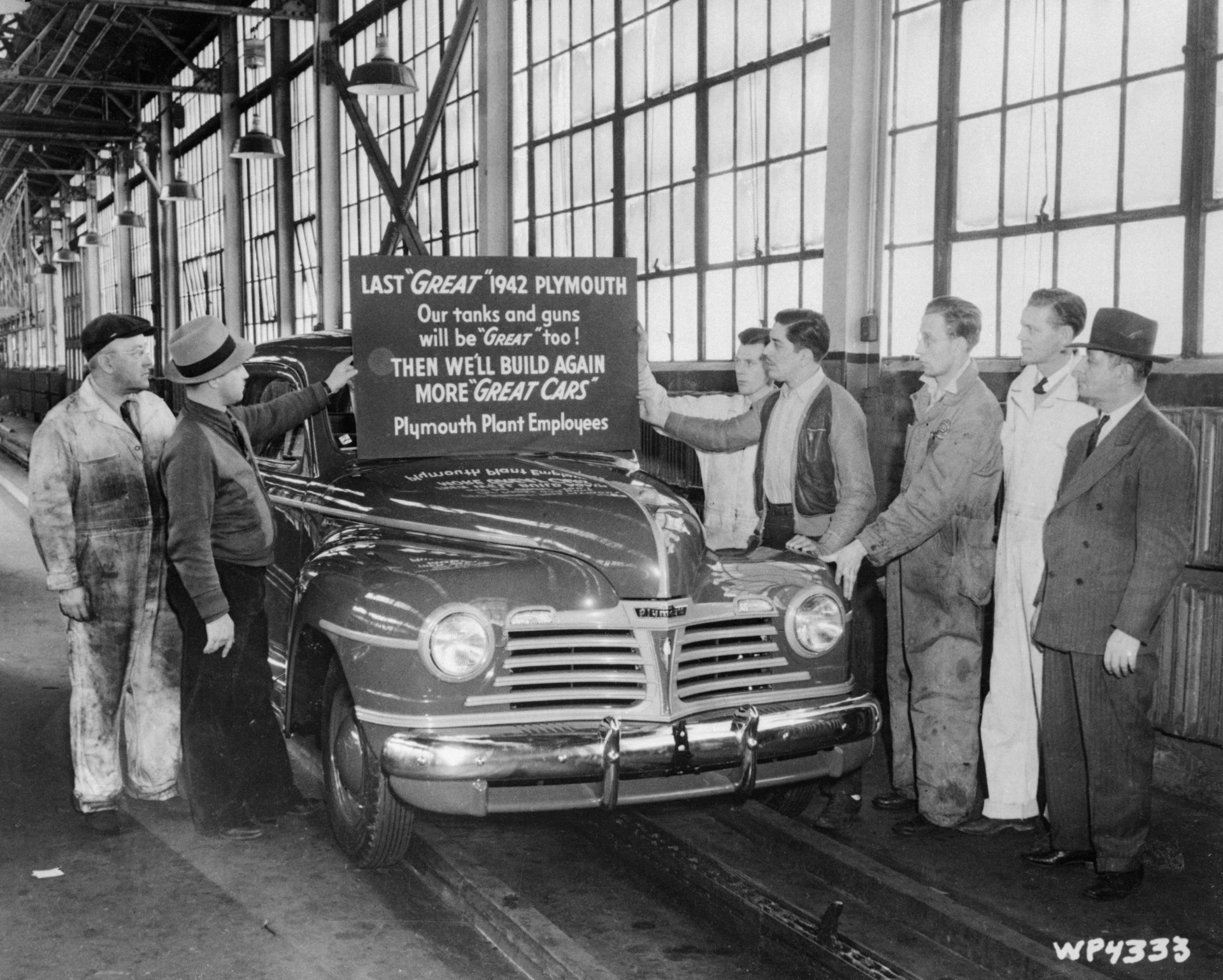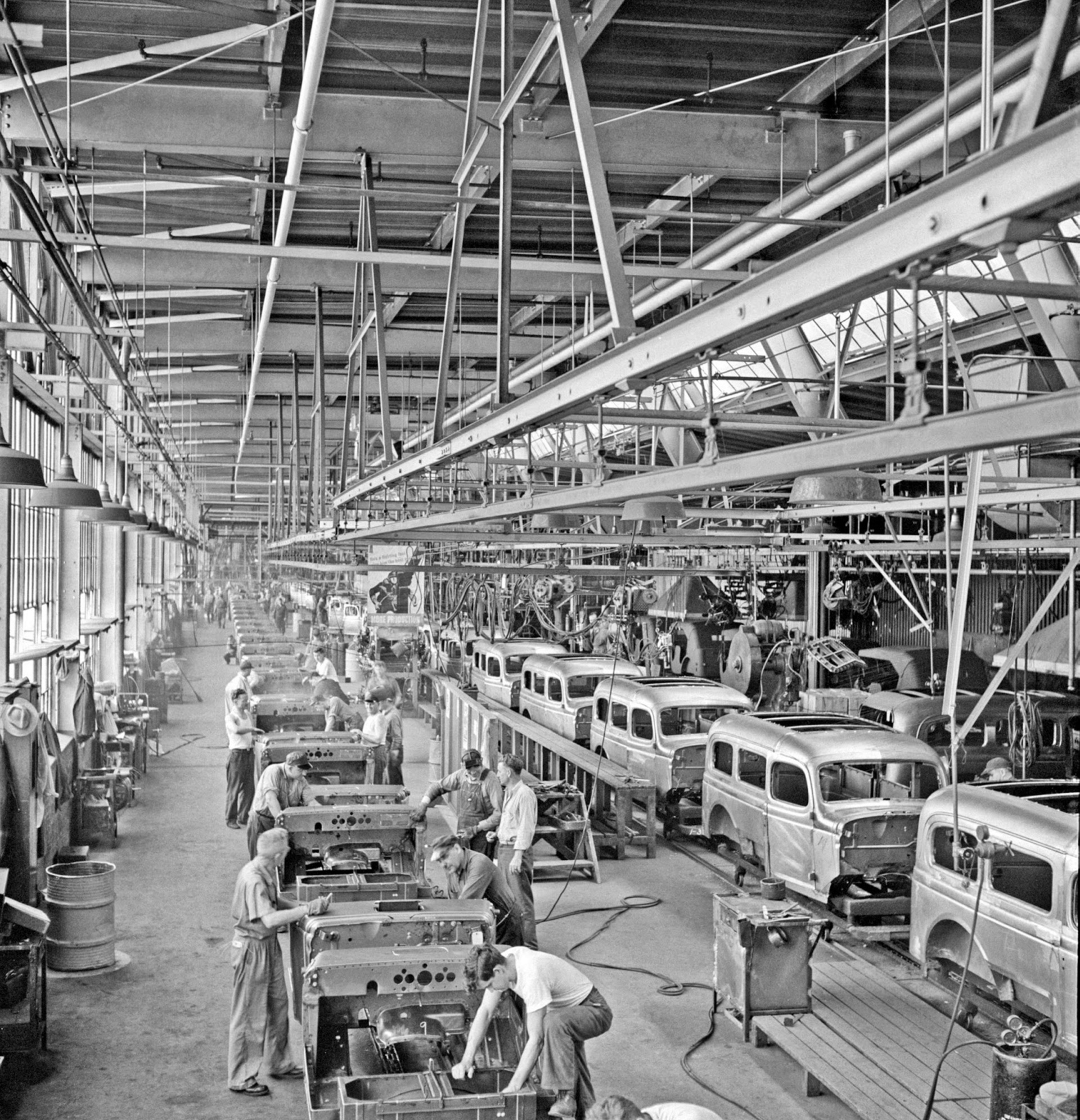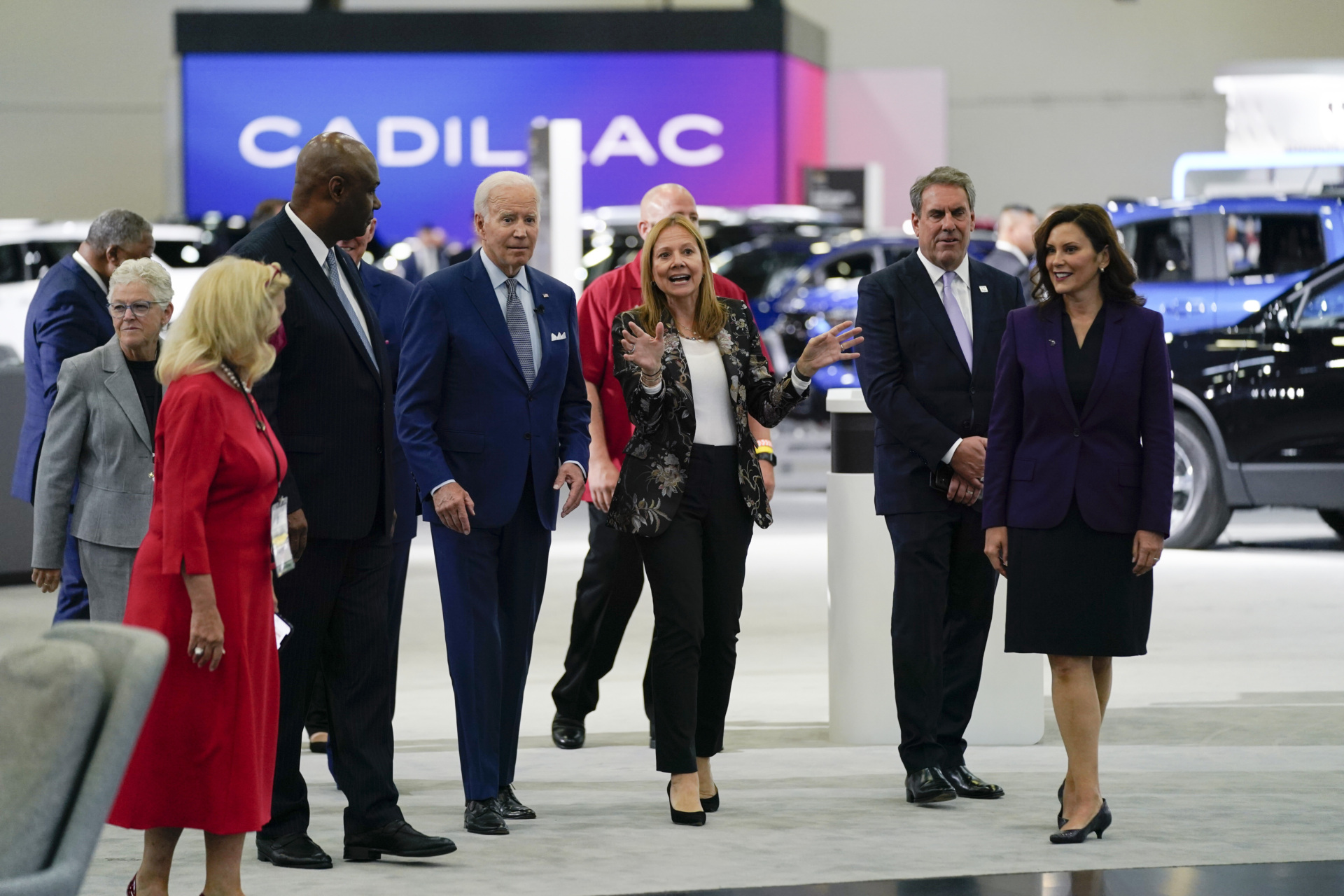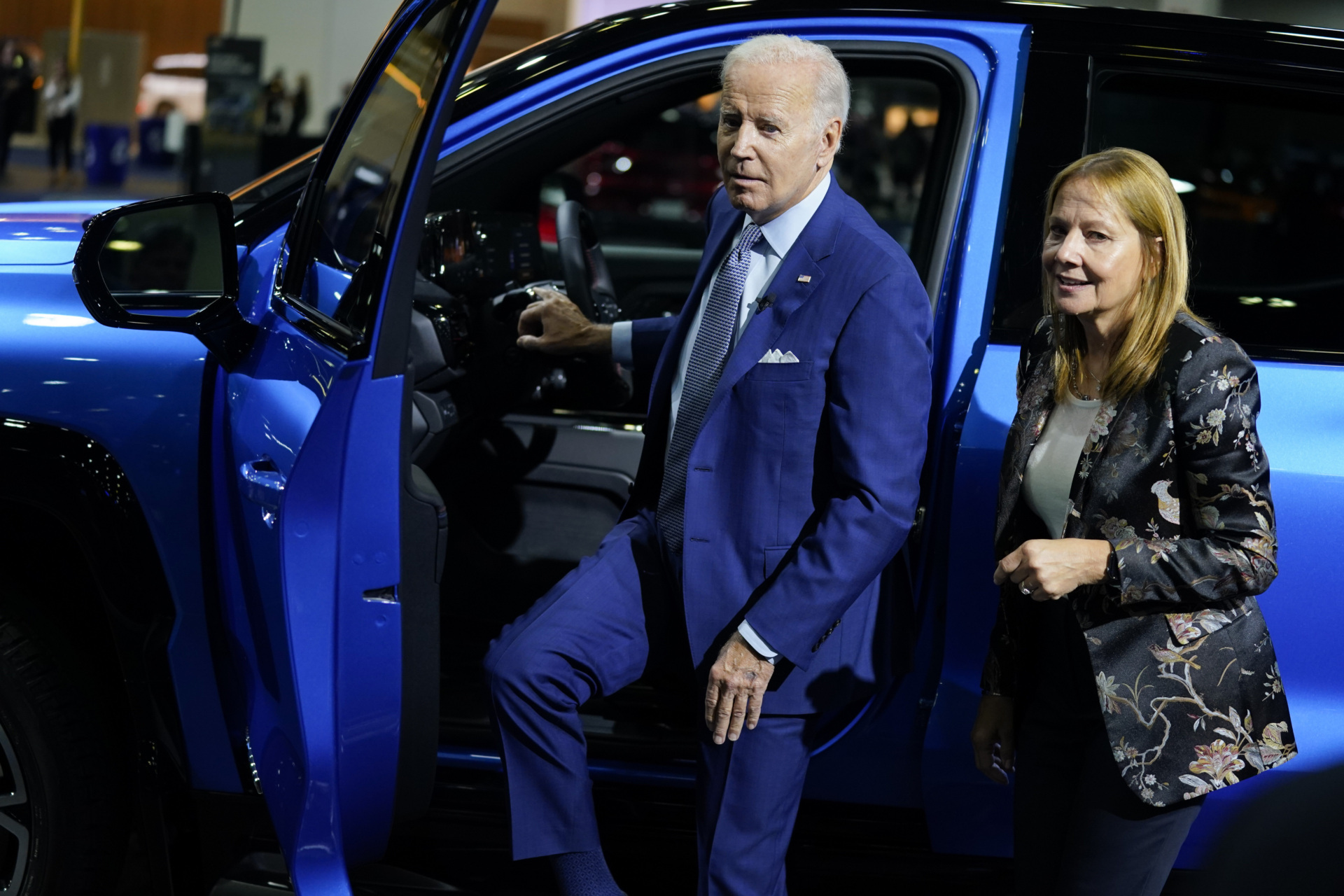Breitbart Business Digest: The UAW Is Fighting Bidenomics and Bidenflation
Which Side Are You On?
The looming strike by the United Auto Workers is as much a protest against Bidenomics as it is the policies of General Motors, Ford Motor Company, and Stellantis.
More than a decade ago, as U.S. automakers were teetering on the verge of collapse and two in the grip of bankruptcy amid the Great Recession, the unions and the autoworkers they represent made many concessions to keep the Big Three afloat. A big one was the agreement to accept contracts that no longer tied worker pay to inflation.
The pressure put on the unions at the time was tremendous. The Obama administration relentlessly pushed for acceptance of its program, largely because it wanted to claim credit for rescuing the auto industry. The workers were threatened with economic ruin if they did not sacrifice to prop up their failing employers. Politically, the unions were left adrift, abandoned by the Democrats who had long been their allies and finding little welcome among a Republican party still dominated by establishment types enthralled to the agenda of big business and Wall Street.
At the time, the concession on automatic inflation adjustments for wages did not seem too costly. The Federal Reserve had a hard won credibility on its promise to keep inflation low. Since the early 1990s, annual inflation mostly bounced around near three percent. Over time, prices were still climbing, but there were no sudden jolts that threatened to bury negotiated wage increases below unmanageable cost of living increases.
In the years that followed, the promise of low inflation was kept—and then some. The Federal Reserve officially targeted two percent inflation, and its biggest challenge in those years was often raising inflation to that target. The loss of an automatic inflation adjustment did not sting because inflation appeared to have been tamed.
The Great Betrayal
All that changed shortly after Joe Biden took control of the White House and pressed a Democrat-controlled Congress to enact the $1.9 trillion American Rescue Plan Act. Inflation went from 1.8 percent in 2019 to seven percent in 2021. (It had fallen to 0.3 percent amid the lockdowns in 2020.) Despite assurances from the Biden administration and the Fed that inflation was a passing phenomenon—transitory, they said—inflation persisted, clocking in at 6.5 percent for the full year in 2022.
It was even worse in the Detroit region that is America’s automaking heartland. While inflation peaked at 8.9 percent year-over-year in June of 2022 for the U.S. as a whole, in the Labor Department’s Detroit-Warren-Dearborn district, it rose all the way to 9.7 percent. Over the last 12 months, while nationwide 12-month inflation has fallen to 3.7 percent, in Michigan it is running 5.9 percent.
While all Americans have been hard hit by the surge of inflation tied to Biden’s deficit spending, Detroit’s autoworkers have had it far worse than most of their fellow Americans. The place we once called the Arsenal of Democracy was ground zero for Bidenflation’s destructive explosion.

Employees of the Plymouth plant in Detroit usher the last passenger automobile off the assembly line as the auto industry heeds the nation’s call to become “the Arsenal of Democracy” and turns its complete attention to military production for World War II on January 31, 1942. (Getty Images)

American autoworkers assemble a Jeep at the Ford River Rouge Plant in Detroit, Michigan, during World War II. (Charles Phelps Cushing/ClassicStock/Getty Images)

Autoworkers assemble Dodge Army trucks for World War II in January 1942. (Universal History Archive/Universal Images Group via Getty Images)

American autoworkers work day and night to build tanks for World War II in Detroit, Michigan, at the Chrysler plant converted for tank production on June 18, 1942. (Underwood Archives/Getty Images)
The promise of low inflation was broken by the bloated fiscal policies of the Biden administration and the loose money policies of the Federal Reserve.
It only made matters worse that the Democrats time and again sought to downplay inflation or pass the buck onto the greed of corporations or Putin’s invasion of Ukraine. As recently as this month, Democrat leftist stalwart Rep. Alexandria Ocasio-Cortez of New York was circulating the idea that inflation was just “propaganda.” Even when Democrats admit inflation has been problematic and linked to excessive fiscal and monetary expansion, they act as if it were a sacrifice necessary because of the pandemic. Never have they mentioned that the sacrifice was borne more heavily by some than others, much less acknowledged the prices paid by our autoworkers.
What had become of the party that once stood by the autoworkers? Where was the apology for breaking the promise of holding inflation low? Where was the gratitude for the extra-burden of inflation visited upon them in the name of “rescuing” America from a pandemic-induced economic crisis that had already passed?

President Joe Biden and Gov. Gretchen Whitmer (D-MI) listen as GM CEO Mary Barra gives them a tour of GM electric vehicles at the Detroit Auto Show on Sept. 14, 2022, in Detroit. (AP Photo/Evan Vucci)

General Motors CEO Mary Barra leads President Joe Biden on a tour of the Detroit Auto Show on Sept. 14, 2022, in Detroit. (AP Photo/Evan Vucci)
Meanwhile, it has been a boom time for the Big Three. “The North American businesses of Ford Motor Co., General Motors Co. and Stellantis NV have had a couple of outstanding years, as the pandemic’s factory shutdowns, followed quickly by rebounding demand, gifted Detroit with pricing power,” Bloomberg’s Liam Denning wrote in a recent article. Stellantis saw its adjusted operating income margin grow from 11.9 percent in 2021 to 13 percent in 2022. The North American operating margin grew to 16.4 percent.
Mary Barra, GM’s chief executive, saw her pay rise to 362 times the median worker’s earnings in 2022, up from 203 times in 2019. Inflation probably has not hurt her buying power by much.
There Is Power in the Union
No wonder one of the top demands of the UAW is the return of cost-of-living adjustments. The companies have offered to pay inflation bonuses to help repair the damage inflation has done to the earning power of workers. To accept that, however, unions would have to once against trust that inflation will be contained. Given the betrayal of the last promise is still a fresh wound, that is a very big ask.
The betrayal of the autoworkers by the Biden administration goes beyond inflation, 0f course. The Biden administration has been pushing policies to electrify most new vehicles within a decade or so. That rush toward electric vehicles will mean a rapid decline in payrolls for autoworkers—even as the automakers enjoy Inflation Reduction Act subsidies. Although the Biden administration claims there will be many new “clean and green” jobs, no plausible estimates see a net increase in employment for autoworkers from the transition. You don’t need as many people on the electric vehicle assembly line as you do to build a gas-fueled car. It also has not gone without notice by the unions that many of the proposed new green manufacturing plants are in anti-union, right-to-work states.
Even if you are a big believer in the notion that climate change is an existential threat that requires transformation and sacrifice, how can requiring an outsized sacrifice by autoworkers be justified? If we are all to benefit from rushing the process to electric vehicles, why are autoworkers left paying the price?
Very Little Threat to Economic Growth, No Real Inflation Threat at All
Despite what you may have heard from the establishment business press or the Big Three’s media allies, a strike would not be ruinous to the U.S economy. Analysts at Bank of America estimate a full UAW strike at all three manufacturers would be a drag on GDP growth of 0.1-0.2 percentage points annualized per week due to lost production. A strike that lasted a full quarter at all three manufacturers—a very unlikely event—could drag GDP growth down by 1.6 t0 2.2 percentage points, according to Bank of America’s analysts. In an economy growing at a faster than three percent rate, that’s not a catastrophe.
There’s also likely to be little upward pressure on inflation—even if the unions win their fight for higher wages. The new contract will directly affect around 150,000 workers, or 0.1 percent of the U.S. workforce. Very likely much of the increased cost would be absorbed by manufacturers margins rather than car customers.
“This means that even a one-time increase of 30% would only boost wage growth by a few basis points. Therefore, it will not be a significant contributor to wage inflation by itself, which in turn means limited upward pressure on price inflation from wages,” Bank of America’s analysts conclude.
The fight over Bidenflation and Bidenomics is reminiscent of much older fights for workers. As a time-honored union songs says:
It is we who plowed the prairies, built the cities where they trade.
Dug the mines and built the workshops, endless miles of railroad laid
Now we stand outcast and starving midst the wonders we have made
But the union makes us strong.
Solidarity forever!





Comments are closed.